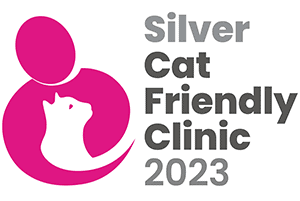Housing
Rabbits can either be kept outdoors or indoors as house rabbits.
Outdoor rabbits should be sheltered from extreme temperatures and therefore kept warm enough in the winter months and cool in the summer months. Rabbit housing should provide shelter from draughts, rain, direct sunlight and predators.
They should have a warm, comfortable and dry bedding area with enough room to be able to stretch out in all directions and to be able to stand up on their back legs without touching the top of the hutch. It is recommended that hutches should be at least 8ft long, 4ft wide and 2.5ft high. The hutch should be cleaned out on a regular basis, especially during the summer months to reduce the risk of fly strike.
The area used by the rabbit to toilet in should be cleaned out on a daily basis and faeces removed at least twice daily during the warmer weather.
Indoor rabbits can be kept in an adequate size hutch as above or can have the run of the house, however care must be taken to prevent them from chewing anything important in the home, especially electrical wires.
They can be house trained to use a litter tray if needed. They should also be handled as much as possible.
Exercise
It’s important for both indoor and outdoor rabbits to spend time outside of their hutches regularly for their health and wellbeing. Rabbits enjoy grazing and being able to stretch their legs and this provides stimulation and prevents boredom. Rabbit toys, objects to hide in and jump on and mud to dig and roll in, all help in keeping a rabbit happy and healthy. Sunlight also ensures vital vitamin conversions needed to keep a rabbit healthy. Ideally rabbits need to spend time outdoors daily although bad weather conditions in the winter months may prevent this every day. The area needs to be secure; it could be an adequate size run or access to the whole garden. They should be sheltered from any predators and prevented from escaping from the garden.
Rabbits enjoy grazing on grass and also enjoy nibbling on other greenery, but care must be taken with poisonous plants that could have harmful effects on a rabbit. Some common plants that can be harmful to rabbits include autumn crocus, begonia, black nightshade, busy lizzie, buttercup, carnation, chrysanthemum, clematis, cowslip, geranium, hemlock, laburnum, laurel, poison ivy, poppy and yucca.
Social wellbeing
Correct housing, regular exercise and company are important for a rabbit’s social wellbeing. Rabbits are social animals and prefer to live in pairs. Rabbits that live socially benefit from increased activity and stimulation, which reduces the risk of obesity. The best pairing of rabbits is a neutered male and a neutered female living together. Rabbits should not live with guinea pigs, as they do not provide the correct companionship.
Guinea pigs have different dietary and lifestyle needs and can even be bullied by rabbits.
It is important to handle a rabbit as much as possible to socialise with people and create a bond between rabbit and owner. However, this should not be a substitute for the ideal company of another rabbit. Rabbits should be handled by supporting the bottom and all four legs. They should never be picked up by their scruff or their ears.
If you have any questions about your rabbit, we invite you to book a free appointment with our clinic nurses.
Download the Rabbit Housing & Socialisation content here (PDF)




